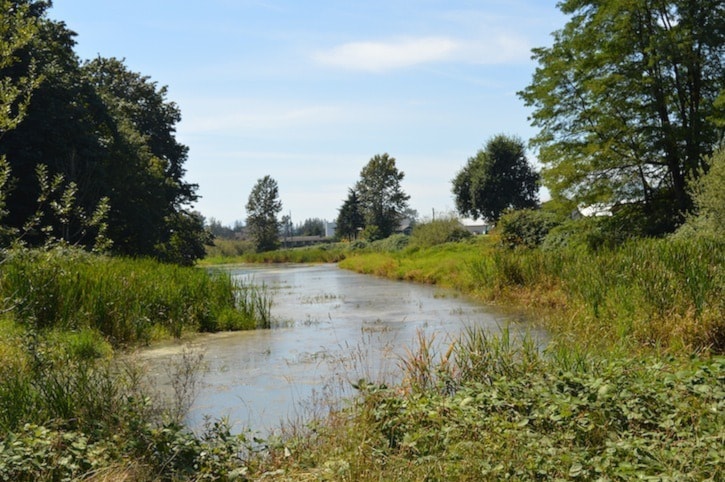The Camp Slough is a pretty degraded waterway by the end of the summer — especially for fish.
Water quality tests by City of Chilliwack showed high temperatures, low rates of dissolved oxygen and a measurable coliform count was found at each and every one of the 11 sampling spots.
Those were some of the early results presented to city council by Rod Sanderson, deputy director of engineering, as city officials look to improve the 11-km waterway with the Camp Slough Enhancement Project.
Coun. Sue Attrill said at the last council meeting that many people told her they were pleased to hear the city was researching the best way to improve conditions in the slough.
"It's a huge issue for our community," she said, adding that many remember when it was a vital waterway.
"Lots in Chilliwack are glad we are trying to make that happen."
The numbers bear that out.
Staff were surprised to see such a large and diverse group of 164 people in attendance for first information session, said Sanderson.
Attendees were young, as well as older, with both agricultural operators and urban residents in the room.
They were asked to offer input about the slough, such as how they used it, and a whopping 110 attendees filled out feedback forms.
There were also earlier sessions with officials from Sto:lo Nation and Cheam First Nation.
Eleven sites along the slough were sampled at regular intervals. They tested for various water quality parameters such as pH, temperature, dissolved oxygen, phosphorous, E.coli, metals and more.
Average dissolved oxygen was 4.3 mg/L whereas higher levels are acceptable for fish, from 6 to 10 mg/L. The average temperature of 18.2 degrees Celsius was too hot, since fish thrive at lower temps, of 8 to 15 C.
This summer there was a sudden fish die-off in the Hope slough, which also had some people concerned.
Total coliform counts, which include both fecal coliform and E.coli, were actually low, but present throughout the Camp Slough, "adding the poor aesthetics due to turbidity and smell of hydrogen sulfide," according to the report.
The feedback already given to city reps about the Camp Slough will help determine the eventual solution, said staff.
Coun. Sam Waddington asked at the last council meeting if there would be ongoing sampling of water quality. He was told tests were done over the years including the last one in 2007.
Waddington later tweeted out: "The City of Chilliwack has some challenges ahead in restoring the water quality in the Camp/Hope River system. I am optimistic for the project that we are undertaking to restore our beautiful waterway."
Coun. Chris Kloot also said he has high hopes.
"I hope we can change it from 'slough' to 'river'," he said. "I don't want it to be a marsh, and I sincerely hope we can do something."
A followup public consultation session on the Camp Slough Enhancement Project is set for Oct. 12, at the Camp River Community Hall.
There will be two presentations outlining findings on the engineering, one starting at 5:45 p.m. and the next at 7:10 p.m. with open house sessions to follow after each. The content of both presentations from city staff will be identical.
They'll be presenting options for improving the slough, and associated costs.
